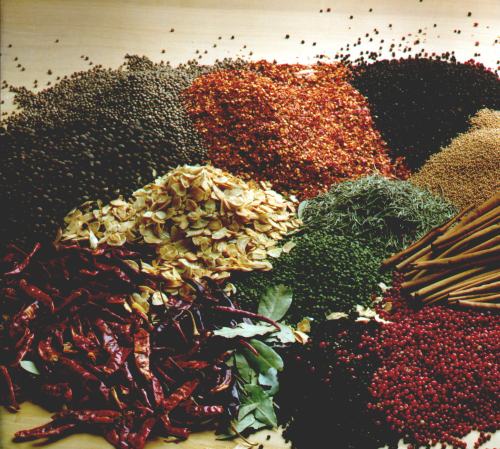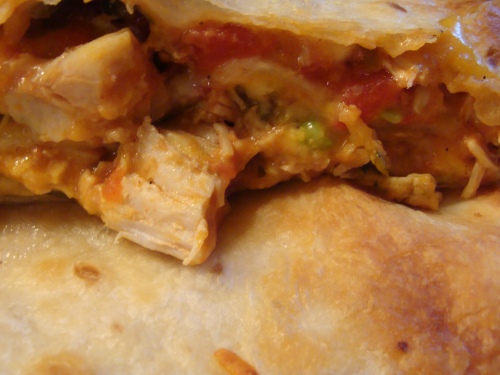From Neolithic man to modern man, we look at the reasons why Portuguese food is so rich and varied and include two recipes that embody not only the history but also the essence of this often neglected cuisine

In order to appreciate the cultural diversity of Portuguese food, one would have to look, albeit briefly, at it’s history
When the first humans arrived in what is today known as Portugal about 10,000 BC, they must have thought they had arrived in paradise! Entering between the shore and the west end of the Pyrenees, they settled in the north to be joined in 2000 BC by the Iberians, who were probably from North Africa. The next to arrive were the Celts and a handful of Germans who were farmers and herders with wagons for transporting what they needed (similar to the ones still used today in Galicia). They settled in the North where forests were rich and abundant and wild game, honey and even shellfish was added to the menu. Similar to an old German recipe that I have jealously guarded for years, this one reflects all things Portuguese so well and is a fitting tribute to the venison those early citizens must have hunted.
PERDIZES COM COUVE (Partridge and Cabbage in Aguardente)

Ingredients
2 young partridges, plucked well, cleaned, dressed and cut in half
Flour to coat
3 medium potatoes per partridge, peeled and halved
1 large onion, finely chopped
2 celery stalks, very finely sliced
100 g presunto, finely chopped
3 carrots, peeled and finely sliced
250g Portuguese couve (or cavolo nero or savoy cabbage)
3 garlic cloves, peeled
2 bayleaves
1 tablespoon olive oil
100 g butter
6 tablespoons aguardente
125 ml vinho verde
125 ml chicken stock
¼ teaspoon piri-piri
2 lemons, zests only – 1 per partridge
Method
Pre-heat oven to 180 C
Put flour and some seasoning in a carrier bag and shake partridge halves up in them so that they are covered.
Heat oil and half of the butter and brown them, removing to a separate plate when done. Add the potatoes and toss them in butter until they are crisped and then add the rest of the butter and sauté the onions until they are transparent at which point you add celery, presunto and bay leaves and stir fry until done. Now add piri piri and cook everything until well incorporated. Finally, add cabbage, aguardente and cook until cabbage is just softened.
Pour this mixture into a large cast-iron pot or a casserole, place the partridges, breast side down into the cabbage so that they are half buried. Tuck in the potatoes and carrots, pour over wine and stock, put on the lid and cook for about 50 minutes until the potatoes are cooked right through.
Up the heat to 200 C, making sure nothing is sticking to the bottom, scrape and add some water if this is necessary. Turn the partridge halves around and cook uncovered for about 15 minutes, basting regularly.
Serve with crunchy Portuguese bread and any crisp chilled white Herdade de Cartuxa

Nuts and chestnuts were gathered, roasted and used for making bread and I can only imagine how rich and varied that nut meal must have been! The Portuguese then, as now, took advantage of the fine pastures, both for raising livestock and farming and consistent food supplies slowly became the order of the day. Both they and their animals lived a life of abundance. The pigs, still relatively wild in those days, were associated with fertility, authority and power. A vitally important source of protein it became a staple in the diet then, as they are today. To add to this every increasing menu were contributions by the Celts in the form of their sacred cattle and also their sheep. They lived in villages in round stone houses that can still be seen in Northern Portugal today and established trade with Brittany and the British Isles, most importantly, tin. The inhabitants of Portugal thrived, so foreigners arrived, settled and introduced more foodstuffs, more habits and more traditions.
The fiery and proud Celtiberians and Lusithanians lived in the Northwest.

It took the Romans almost 200 years to take over Iberia even though they overran Gaul (France) in seven years, and introduced olives, onions and garlic – three ingredients which are indispensable in Portuguese cuisine. The Lusithanians had withdrawn to hilltop villages in the northwest and at about the same time, the Phoenicians founded little fishing and salting settlements throughout the south of Portugal, followed by the Greeks and Carthaginians.

The Romans settled but steered clear of the North (there were only a few settlements there) and preferred the south was which was suitable for wheat, olives, and grapes as in Italy. When the Roman Empire started tumbling down, the Teutonic invasion began in Gaul and Portugal had new visitors, the Swabians in the northwest. Luckily the Germans did not try to destroy all traces of the Romans since they were a nation that had respect for anything from which they could learn and in return they taught Portugal how to farm with the quadrangular plow. The Climate in the North northwest of Iberia suited their crops and they simply stayed there and when the Vandals and Alans crossed the Pyrennes they moved to western edge of the peninsula. The Alans, at the time the strongest of the tribes, took a large area in the center and south, approximately the area of Roman Lusitania. The Luso–Romans offered no opposition to their settlement.

The Moors arrived in Spain in 711 and quickly invaded these Christian lands. They remained in the South, in the Algarve and Alentejo. Egyptian Moors settled in Beja and Faro and the Syrians nearer Seville. The Moors were great leaders and fortified cities, introduced complex and effective irrigation systems and introduced linen paper. It is common cause that they were a nation of great learning who introduced new irrigation methods that turned barren areas into agricultural land successfully planting almond trees, figs and citrus trees. It was then that new ingredients in the form of rice and spices were introduced, not to mention fascinating cooking techniques. Cataplan, introduced by the Romans is still highly visible in Portuguese cuisine today.
The Christians and the Moors were at loggerheads since the beginning and it lasted until 1249 when the Christians finally took back their land. Portugal remains in Christian hands to this day.

Columbus started globe-trotting and began exploring the world – this heralded the beginning of a new and powerful era in the history of Portugal, then a powerful sea-faring nation. He and his fellow explorers must take responsibility for adding yet another dimension to their cuisine. They introduced spices such as coriander, saffron and ginger to Europe and brought home vegetables like potatoes, tomatoes, peppers and so much more from the South America’s, then known as the New World.
Fascinated by the east Vasco da Gama discovered the sea route to India and the far east and opened the doors to the import of more exotic spices. On these trips the famous bacalhau was born when used in addition to cured pork that was standard fare for sailors on these long voyages to the far east.
Culinary history didn’t stabilize completely then but this rich and varied basis is certainly on of the main reasons why Portuguese food withstood, to a great extent, the doldrums of the Middle Ages.
To celebrate the pork and at the same time the seafood for which Portugal is, justifiably, so famous herewith:
PORK WITH CLAMS A ALENTEJANA

1 kg Pork shoulder, trimmed of excess fat and cut into 3 cm cubes
1 kg small clams, still in their shells but already well purged
4 garlic cloves, peeled, finely chopped
1 onion, peeled and chopped
200 ml good fruity white wine
1 lemon, zest and juice
1 tablespoon sweet paprika
½ teaspoon allspice
3 fresh bayleaves
800 g potatoes, peeled and cubed
1 handful chopped coriander
Salt and freshly ground pepper to taste
500 ml water
5 tablespoons olive oil
Method
Boil the potatoes for about 5 minutes on high heat, remove, rinse, dry and set aside.
Heat the oil in a large, heavy bottomed, wide pan and sauté pork over high heat until golden and crisp on both sides to add flavour to the meat. This will take some time.
Add onions and garlic and sauté until the aroma is noticeable, add salt, allspice, paprika and pepper and then the wine. Allow it to boil for a few seconds in order to thicken the sauce somewhat.
Add the water, put on the lid and simmer over low heat for about 1 ¼ hours, turning the meat over and checking regularly.
Should the need arise, add some more water but remember that there must be enough slightly thickened sauce in the pot.
Finally add the clams, the zest and the lemon juice, put on the lid, turn up the heat and cook vigorously for about 10 minutes until the clams have all opened up. Discard all closed clams.
Check and correct seasoning, stir in the coriander and set aside to rest.
During this period, fry the potatoes in enough olive oil until they are crisp, sprinkle with Malden salt and serve immediately with a red from Quinta do Carmo



























































